Backdrop
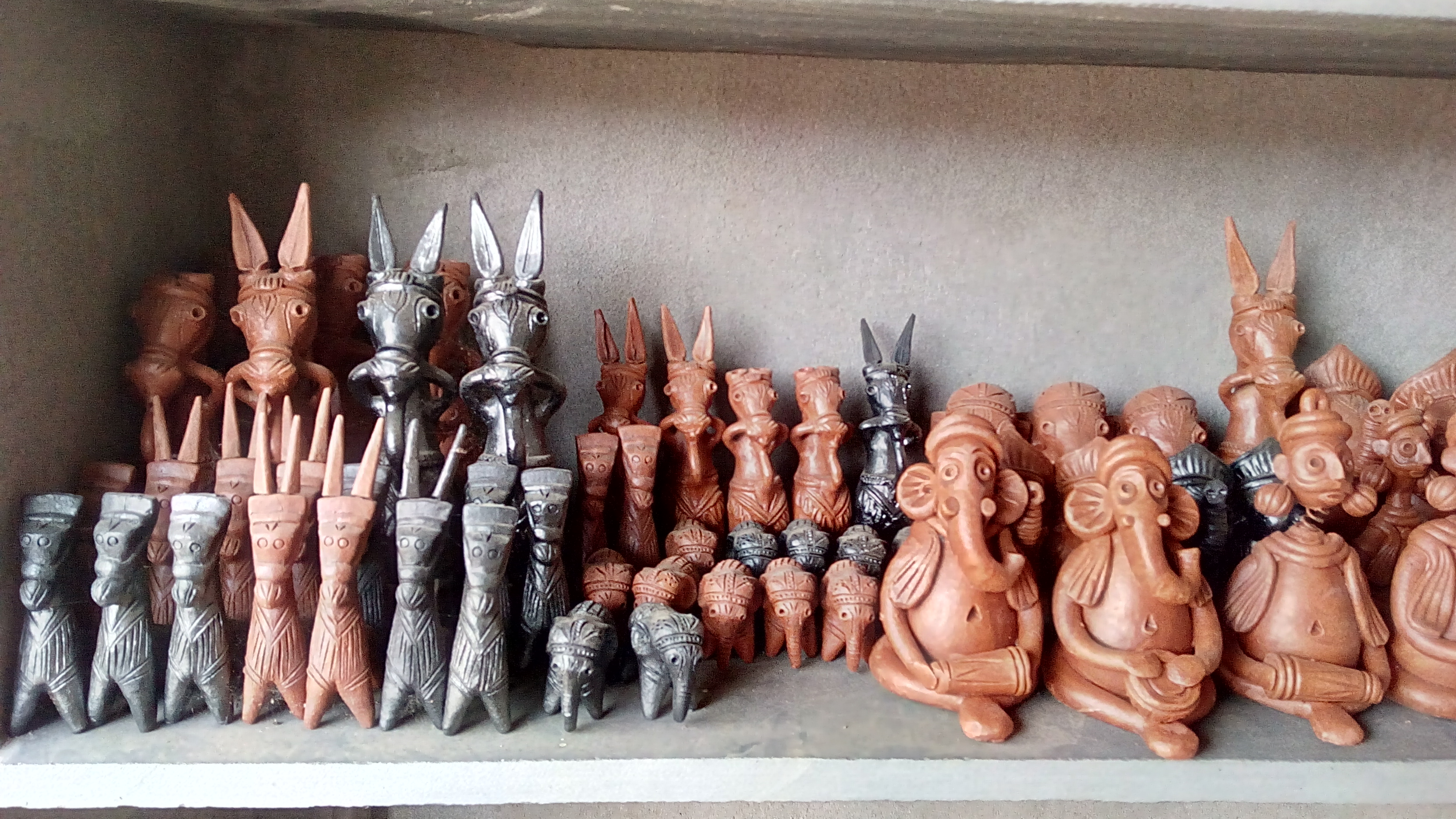
We had an assignment and it was quite challenging for us. We are to explore the world of Terracotta artworks. Well after initial preparation, we fixed the date.
On that day morning my conversation with Mr. P.M. was as follows:
P.M.: It has been raining downpour. Will we proceed?
Me: It’s up to you to decide. I’m ready!
As such I felt the excitement ever since I have heard of our next assignment, that is, to explore the world of Terracotta along with traditional saree – Baluchari and Swarnachari! The birthplace of Terracotta is a remotely located village in Bengal, named Panchmuda. Our assignment was to explore possibilities of promoting the village and their traditional handcrafted artworks through the Bengal Handicraft shop of DealVega.
First Visit
This is a traditional artform of Bengal in which excellent artisans of Bengal explore their creativity using specially processed soil. However, I have never been to the birthplace of Terracotta. So, it was a great opportunity for all of us to learn what goes inside.
The Rain
Well, the rain was absolutely unstoppable. The roads were getting flooded with stagnant water and we had to paddle through the knee-deep water. It seems a disaster when we reached the station to catch the train. Nothing seems to work for us. We could not board on the first train because of over-crowding. The next train would warrant one more hour of waiting time. Finally when it entered the station the scenario was no different. It was over-crowded too. But we had no option but to board on this train as we were getting pretty late.
Bankura – Close to Terracotta World
At around 11.00 pm we reached a small town in the district of Bankura, a province in Bengal. We had to stay here night long and our journey for Panchmuda would begin the next day morning. One point that drew our attention was that the station was pretty neat and clean.
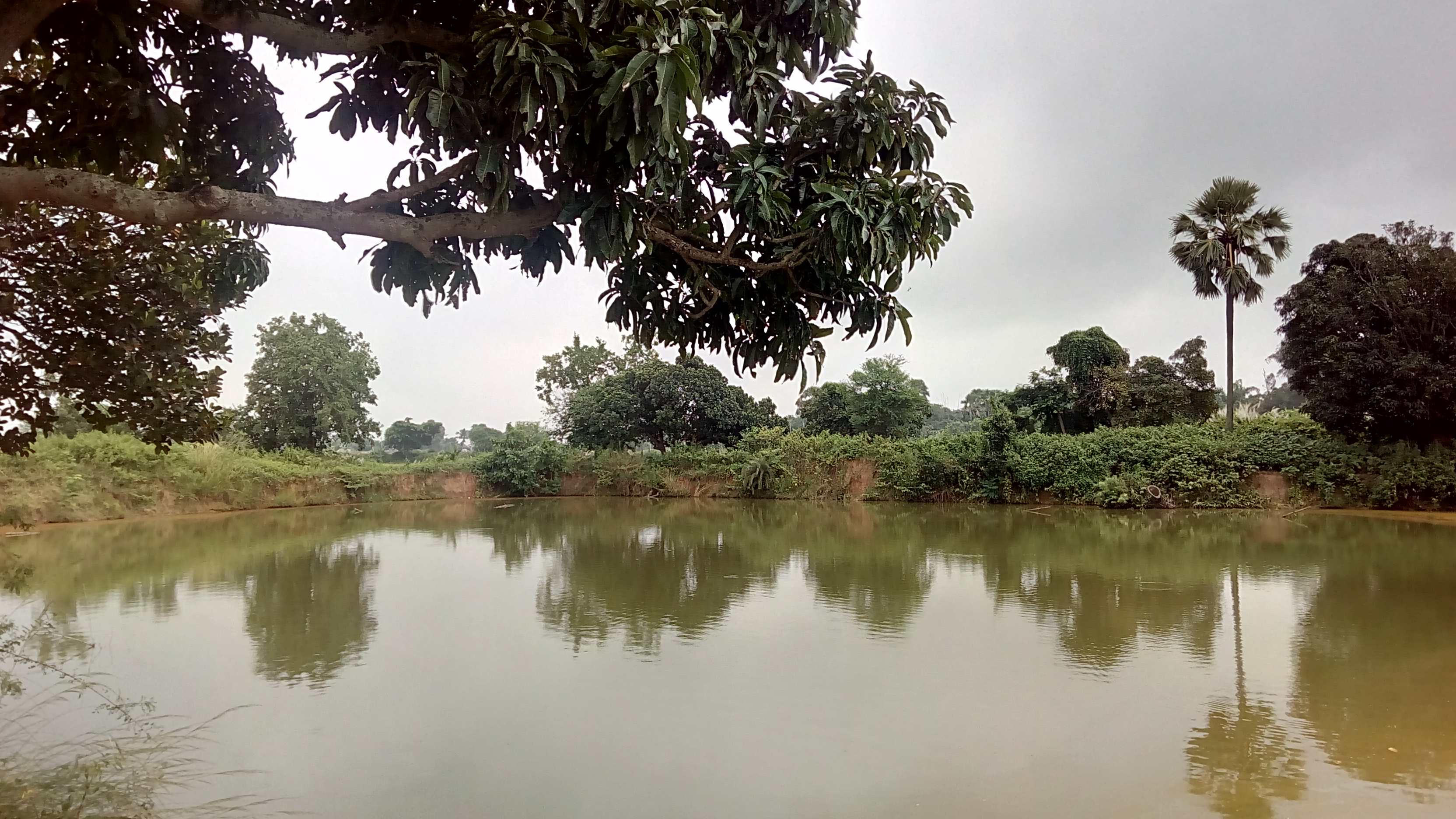
bankura
The Elephant Corridor
The next day we started our journey for Panchmuda early in the morning. On our way to Panchmuda our strength had doubled as we got our uncle and his friend to accompany us, rather to lead us to our destination. Two bikes started racing to cross a dense forest covering Sal, Teak, Mahogany, and many other trees. In course of our journey we received a warning.
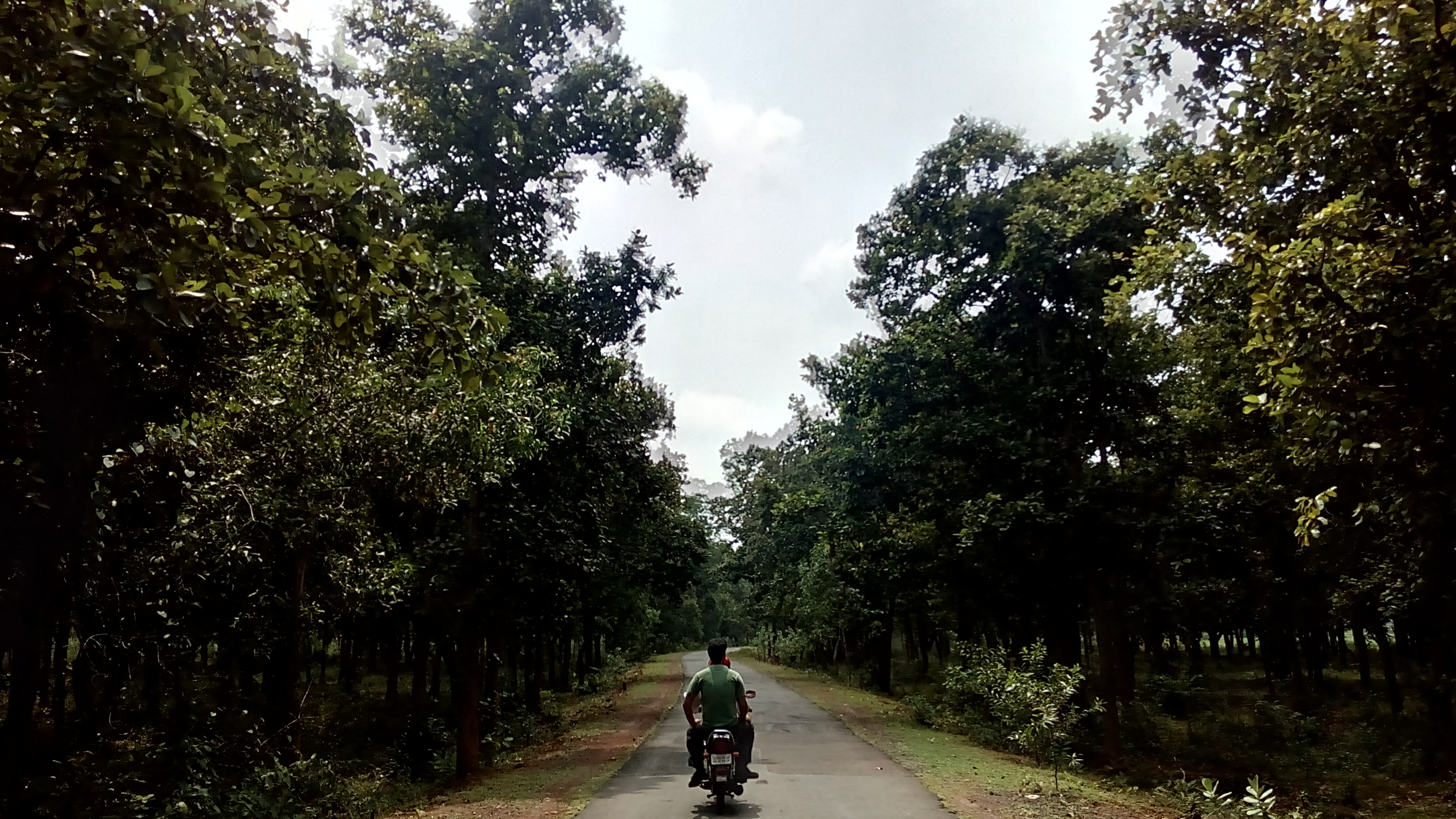
Elephant Corridor
‘This route is a free elephant corridor’.
Yup! So it is! Elephants from the forest area of Dalma Mountain nowadays enter this area in search of food. Sal leaves has been their favorite cousin since long time immortal. These days they seem to have enjoyed crops like rice, potato, cabbages and what not, and this is the reason they poke into agricultural lands in troops of hundreds or more and consume whatever come in their way.
So, if we are fortunate (or unfortunate) enough we could have the opportunity to see those wild elephants. Anyways, as we passed the corridor rapidly, we could find no trace of them nearby. Eventually, we reached the village of KUMBHAKARs – the pottery mans, who are the real person behind our traditional terracotta artform.
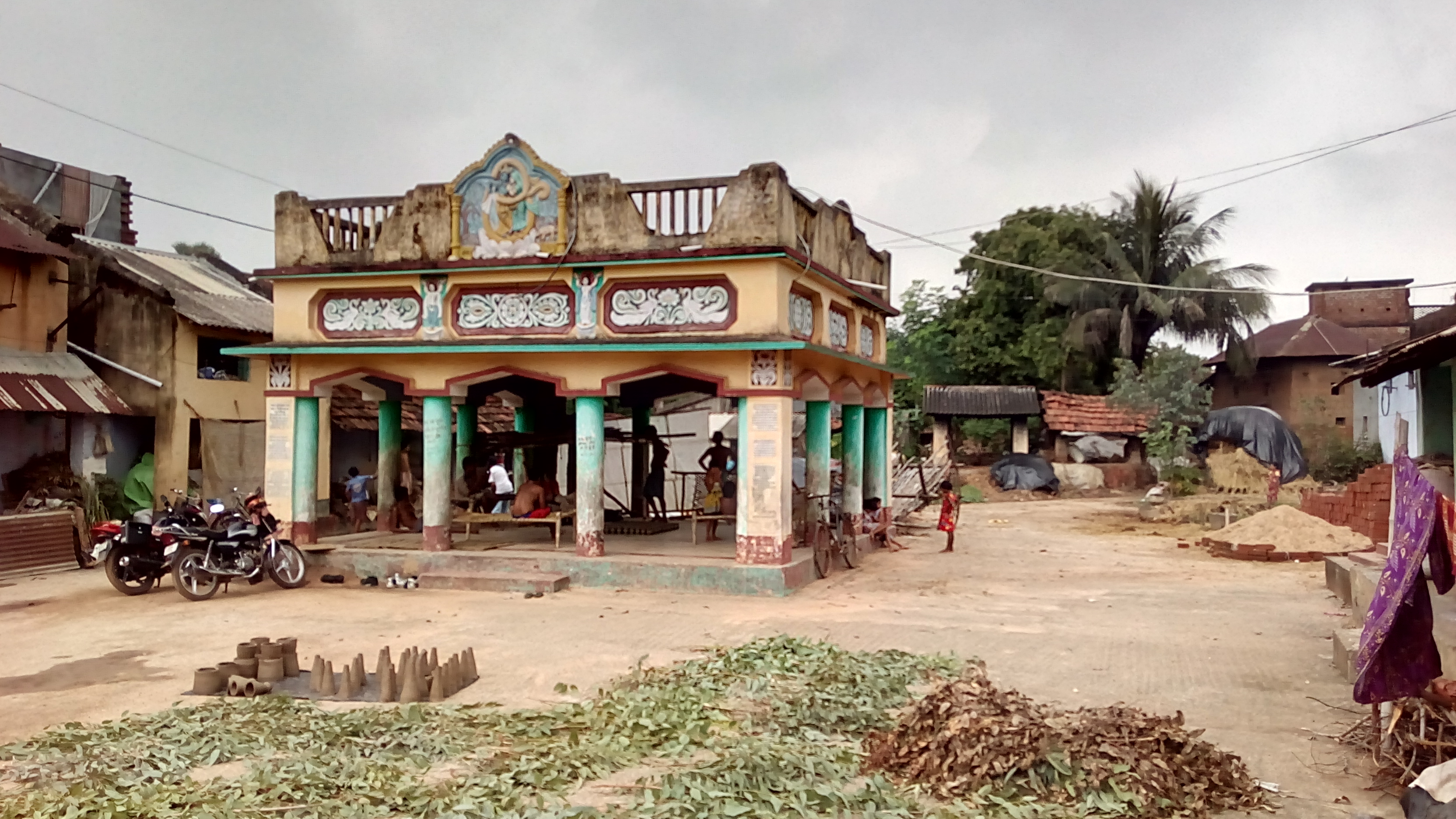
Panchmuda
A Man Constructing 16 ft Terracota Horse
This is a traditional village of Bengal with houses alongside of narrow lanes, cattle tied to poles, and young kids peeped through with curiosity in their eyes.
‘Who are those guys?’
We had our man here as well. So, helped us to get introduced with the artists. That was a Sunday but we found no sign of holiday there. All the young men as well as old craftsmen were heavily engaged to complete their jobs. They were more busy than usual because of the ensuing festive seasons in Bengal. They get bulk orders for constructing Terracotta artworks to be used for pandel decoration. We found these villagers working on a 16 ft horse.
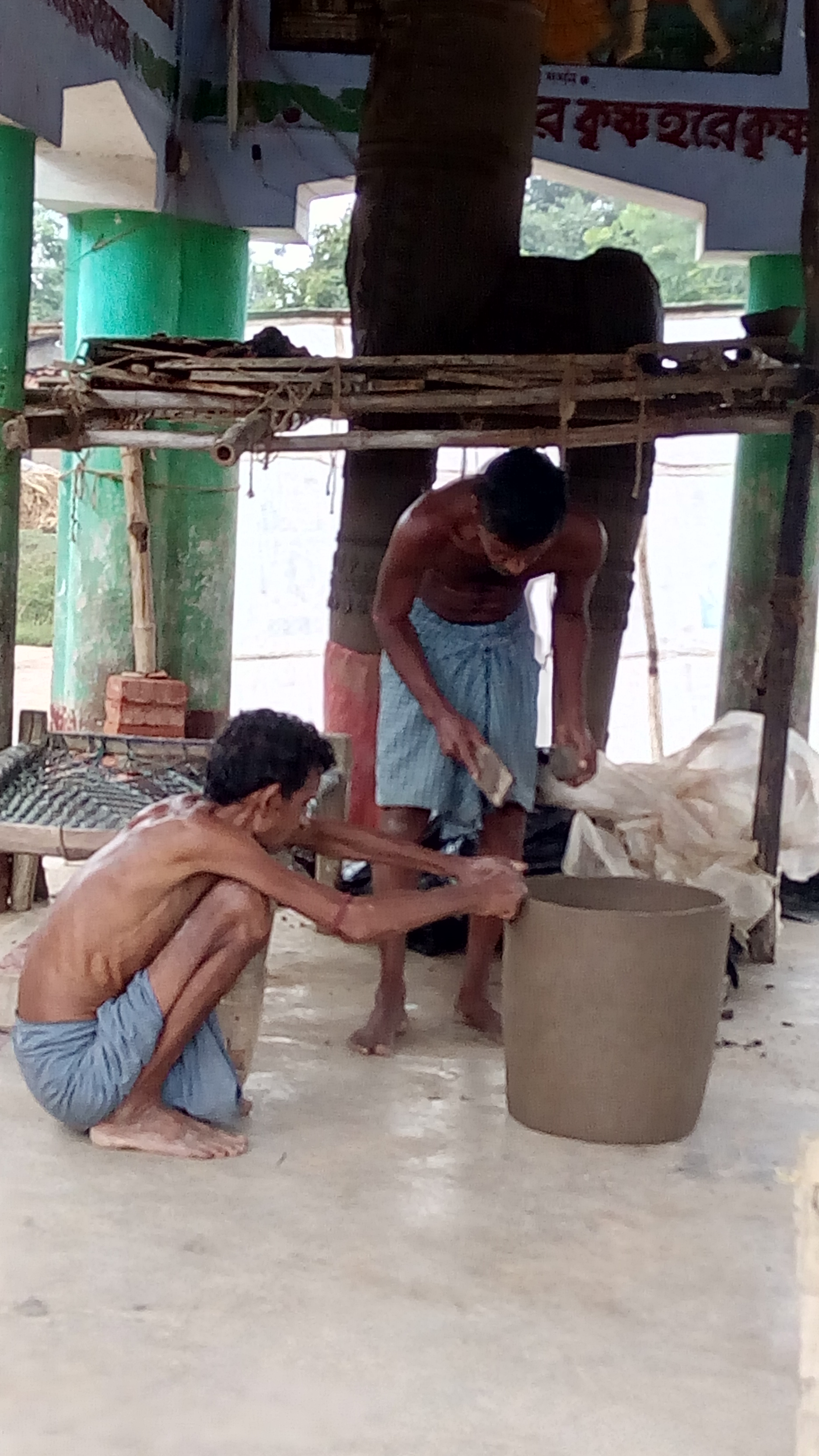
(two men heavily working on to create the 16′ horse – just behind the bamboo structure. Because of this height they have to construct a bamboo structure to work on the upper side of the horse.
Finally we started exploring the terracotta artwork.
There were lots of popular traditional motifs including beautiful Bankura horses, Durga Goddess, Figurines of Owl, the Vehicle of Goddess Lakshmi and an obvious symbol of wealth and prosperity, and many more which are mostly reflection of Hindu Mythology.
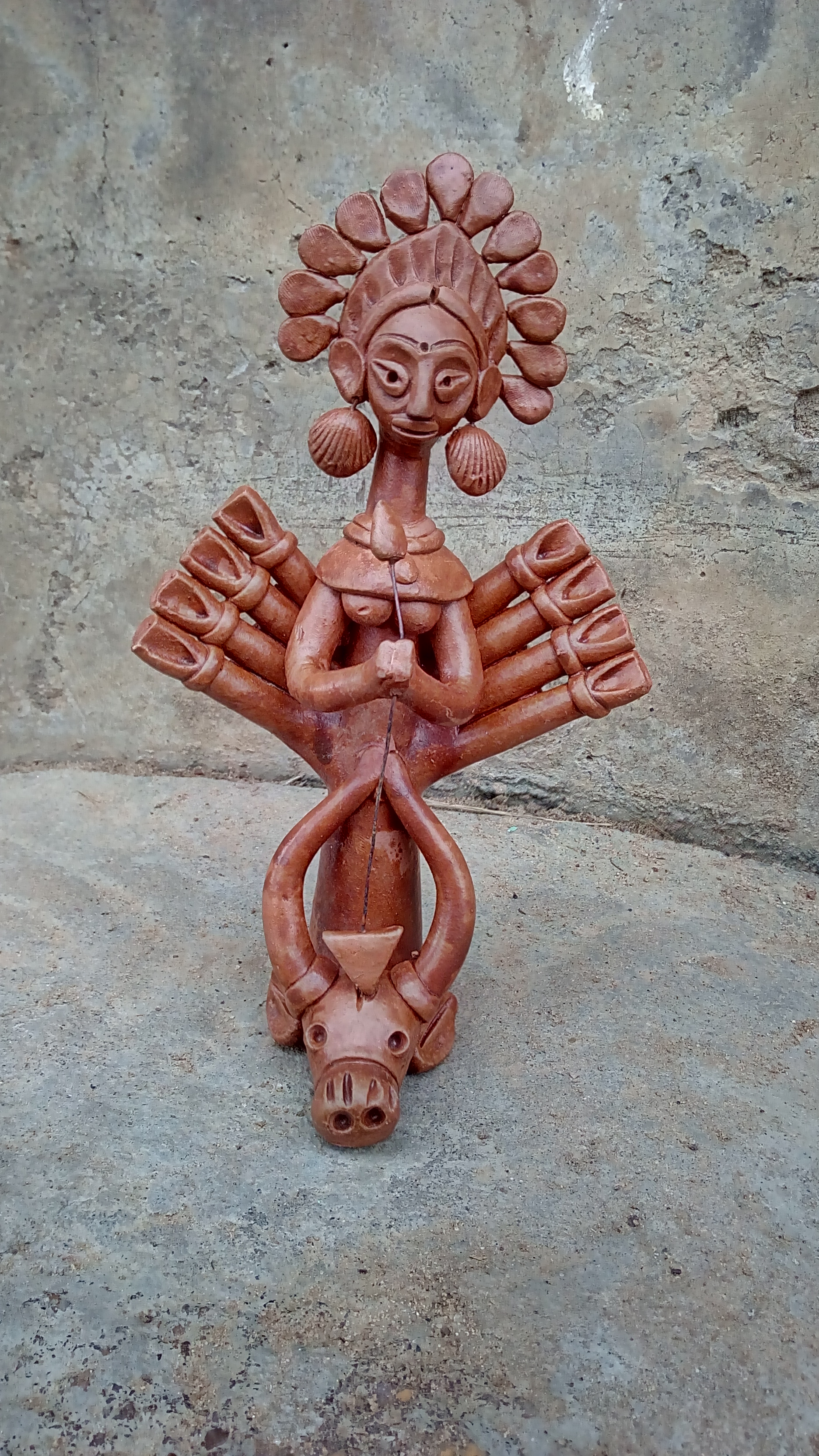
terracotta durga
Devi Durga after becoming victorious in her fight to destroy the daemon Mahishasura
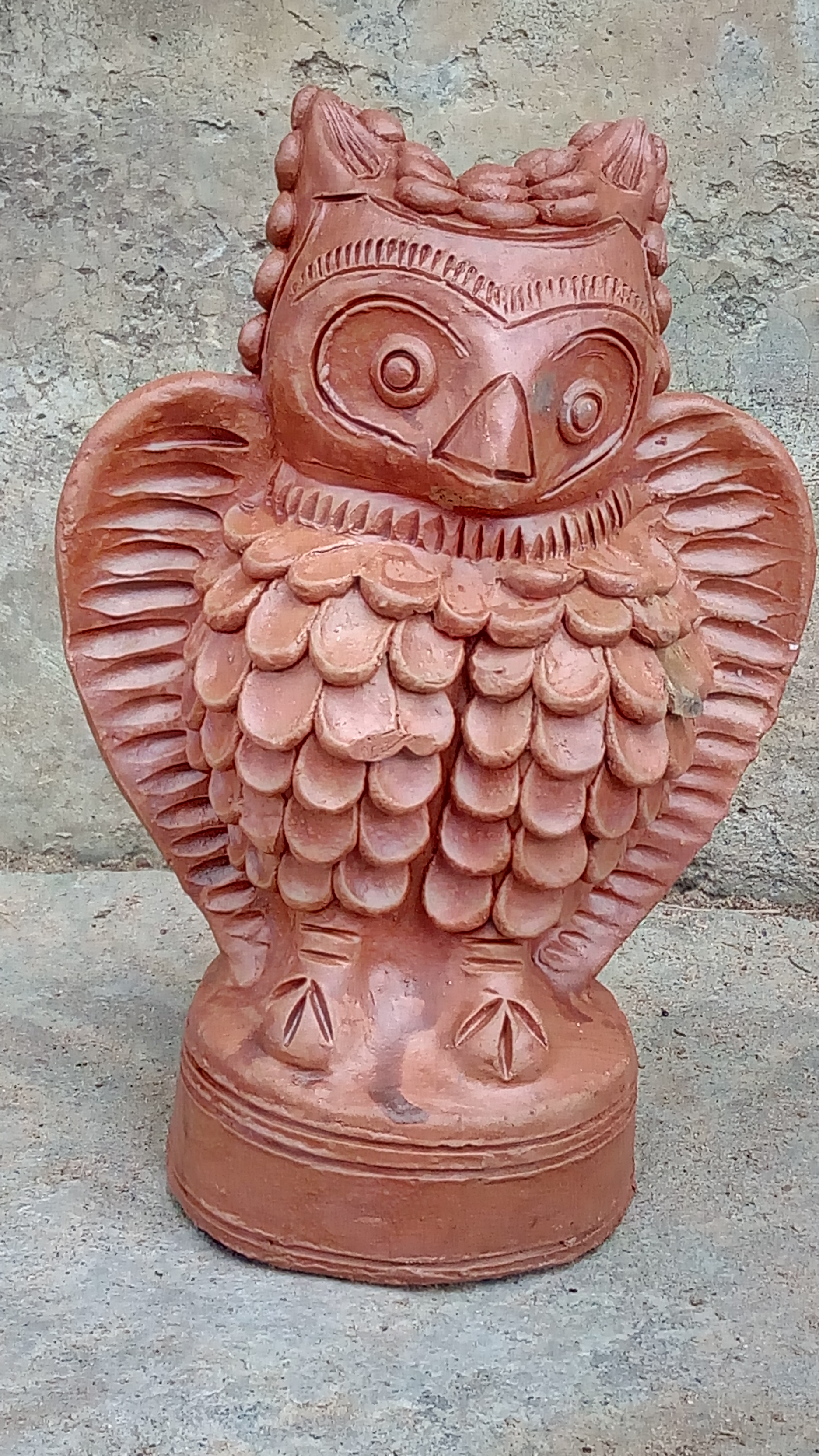
Terracotta Owl – The Vehicle of Goddess Lakshmi – Symbol of Wealth & Prosperity
Now to go with the time and to make this artform universal and to ensure its survival, they have extended their themes to incorporate modern ideas like ‘Save The Tree’ theme, ‘Open Education’, Mother & Child’ and much more.
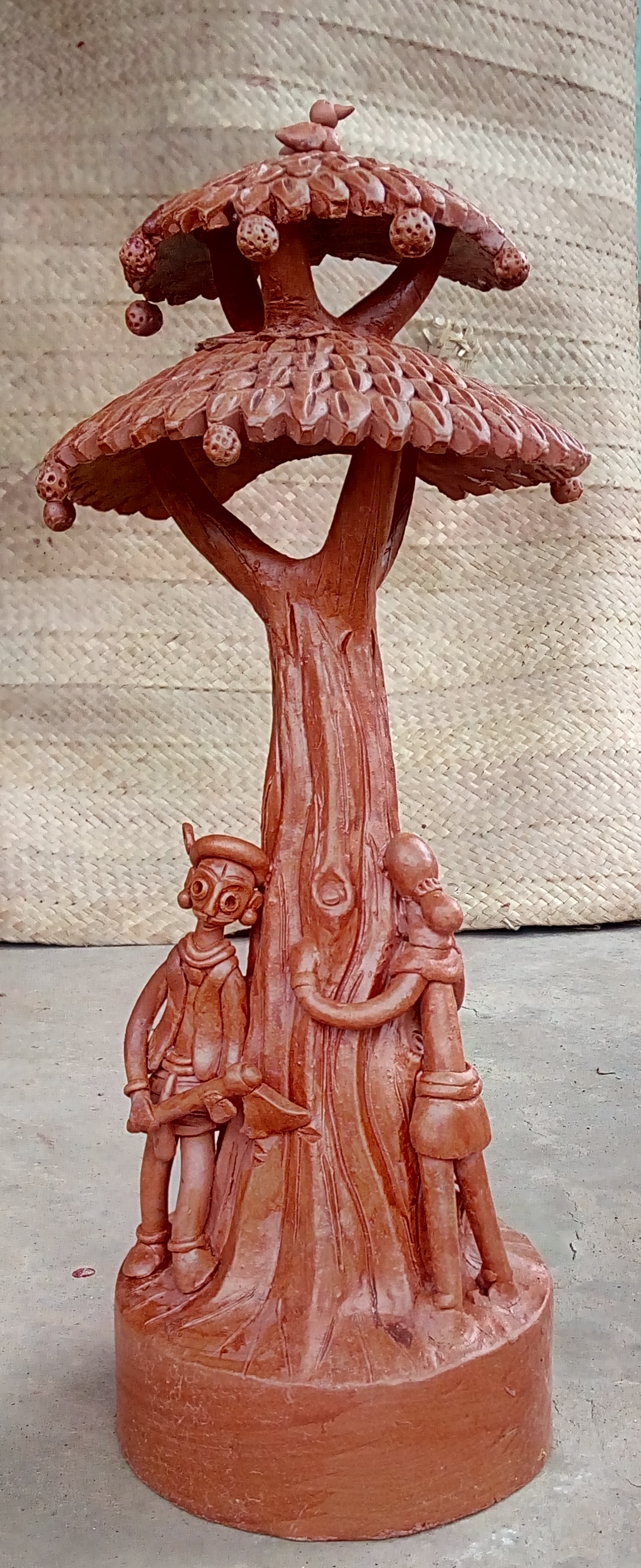
Go Green Terracotta Artwork – Watch the woodcutter trying to cut the tree and the lady beside is protecting the tree!
As such we have recorded few videos. Follow our YouTube channel to watch them. This is just one of the videos that worth a mention here!
(Interviews were held in Bengali – so we’ll transcribe the same in due course!)
We have uploaded few products in our shop section for terracotta.
And finally this is our Terracotta Project Team!
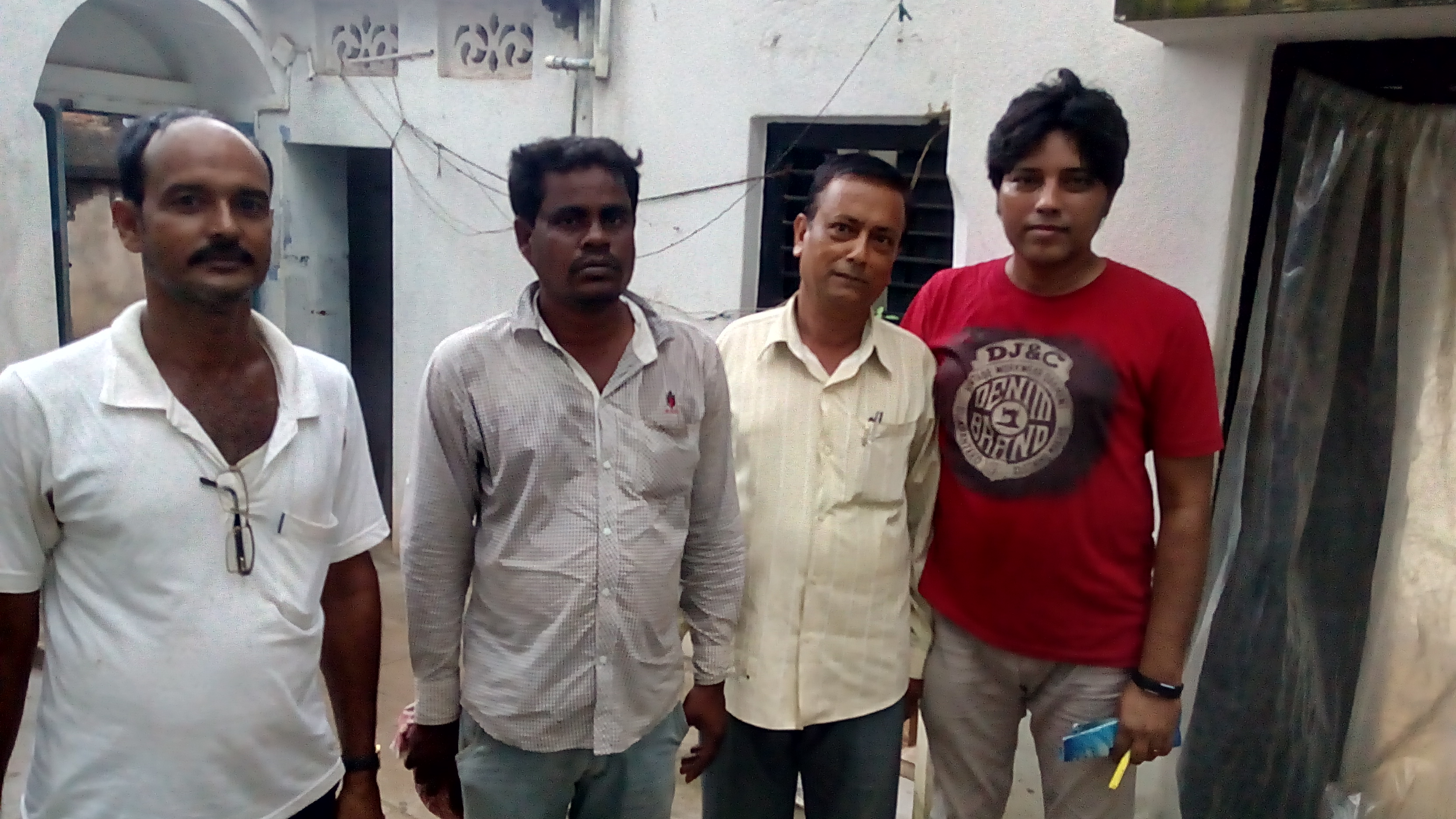
Our Terracotta Project Team w/ One Member Missing, who was behind the Camera!
We are thankful to all the local residents for their immense support and enthusiasm!



Its my pleasure, to be a member of the team, it was an wonderful exploration to bring such Bangla culture in front of the whole world. I sincerely express my thank to you for publishing this wonderful blog.